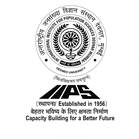- About IIPS
- Academics
- Study @ IIPS
- Departments
- Centres
- Controller of Examination
- Programme
- Distance and Online Education
- Training
- Facilities/Services
- Resources
- Virtual Learning
- Digital Initiatives (MHRD)
- Notice
- Seminars / Workshops / Conferences
- Conferences
- Publications
- Seminars
- Sponsored Research
- Workshops
- Collaboration
- National
- International
- NEP 2020
- Admission
- Courses
- Admission Bulletin
- TIME-TABLE For Admission 2025-26
- Model Question Papers
- Programme Coordinators
- Fellowships
- Academic Calendar
- International Students
- Visa Information
- Administration
- Faculty & Staff
- Research & Publications
- Library
- Information
- Right to Information
- Vigilance Officer
- Annual Report
- Director's Report
- Cells & Commitees
- Cells
- Commitees
- Committees of NEP 2020
- Staff Walfare Committee
- Cultural Committee
- Internal Committee
- Purchase Commitee
- Students Academic Committee
- Student Research Ethics Committee
- Anti-Ragging Committee
- Institutional Review Board
- Social Media Committee
- Prevention of Caste-based Discrimination Committee
- Code of Conduct and Professional Ethics
- National and International honours, Awards, Recognition, and Medals
- Online Facilities
- Employee's Corner
- Memorial Lectures
- Convocation
- IIPS Newsletters
- COVID 19 Information
- Life @ IIPS
LoSMINM Project Methodology
- Home
- LoSMINM Project Methodology
Longitudinal Survey of Maternal and Infant Nutrition in Maharashtra (LoSMINM)
About Project Objectives Methodology
Baseline Census
A complete census of selected villages will be carried in 2021 using 1he computer-assisted personal interviewing (CAPI) technique. Profile of the village population will be prepared for health, education and occupation. For the follow up of recruited women also CAPI and mobile phones will be used. In the formative stage of the study, panchayat members, ANMs, ASHAs, PRI, and community leaders will be oriented about the study in all selected villages. Orientation programme with women and men will also be organised in the villages to explain the importance of this type of longitudinal study.
Inclusion criteria of participants
Participants will be currently married women aged 15-49 years in the pre-conception stage residing in the study villages. This list will be updated with the help of PRI/ANM/ASHA until the completion of two years.
Exclusion criteria of participants
Women who had a history of chronic illness, carrying twins or multiples babies. This exclusion will eliminate the confounding effects of multiple births on gestational weight gain. This study will also exclude those woman who is sterilised, or her husband had undergone sterilisation.
Recruitment of participants
The selected women from the sampling frame will be followed up each month (+/- 1 week) to record their date of menstruation. A one-to-one interaction will be done with a woman and her husband before starting to follow up to explain the project's objective. During the pregnancy and after childbirth, visits with specified time intervals will be carried.
Biomarkers
Anthropometric measures of population, recruitment of women and children will be carried out with standard equipment accepted by WHO and UNICEF. Also, we will collect blood pressure, haemoglobin, the sugar level in all our follow-ups of women. If feasible, an ultrasound of the pregnant woman will also facilitate during the pregnancy.
